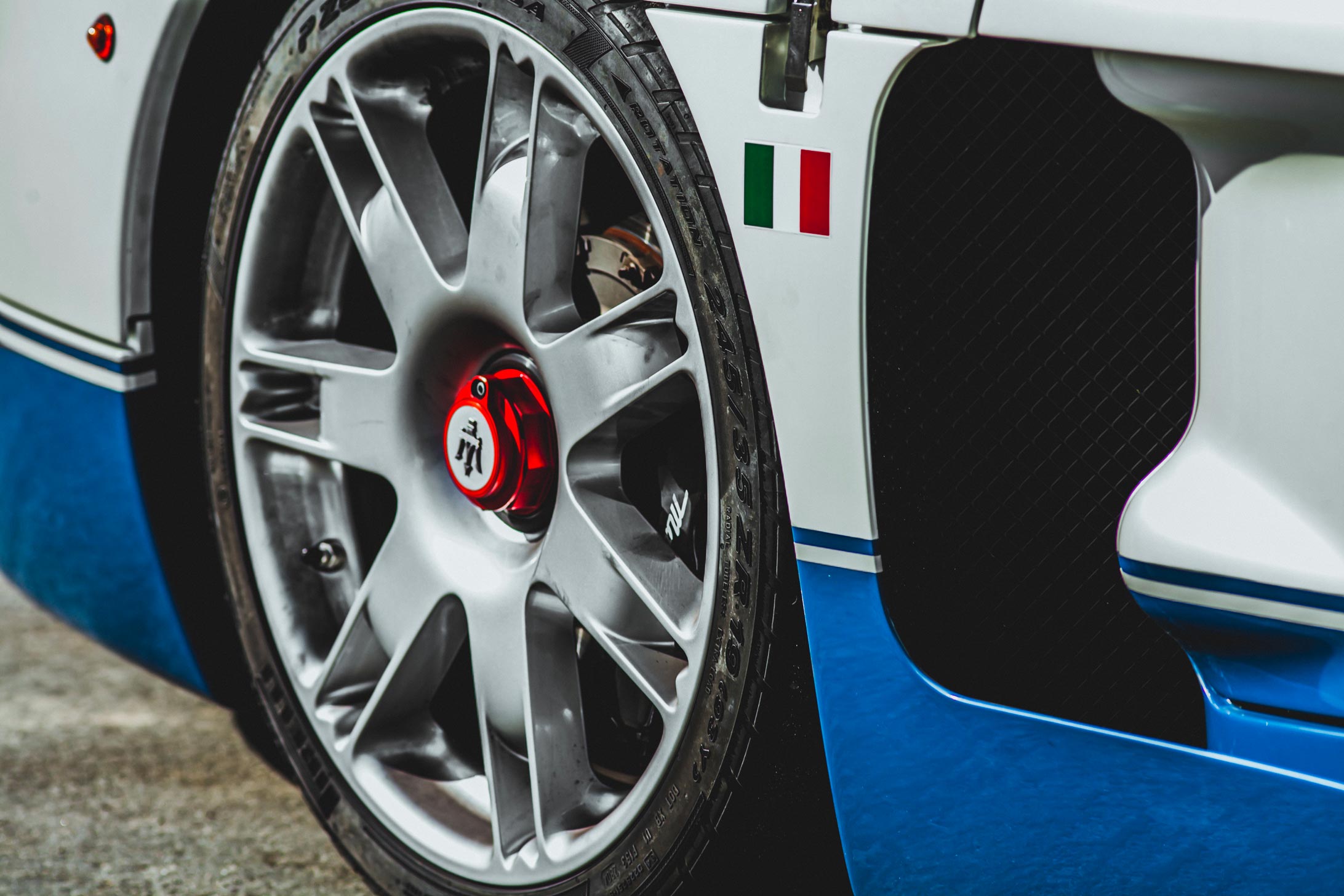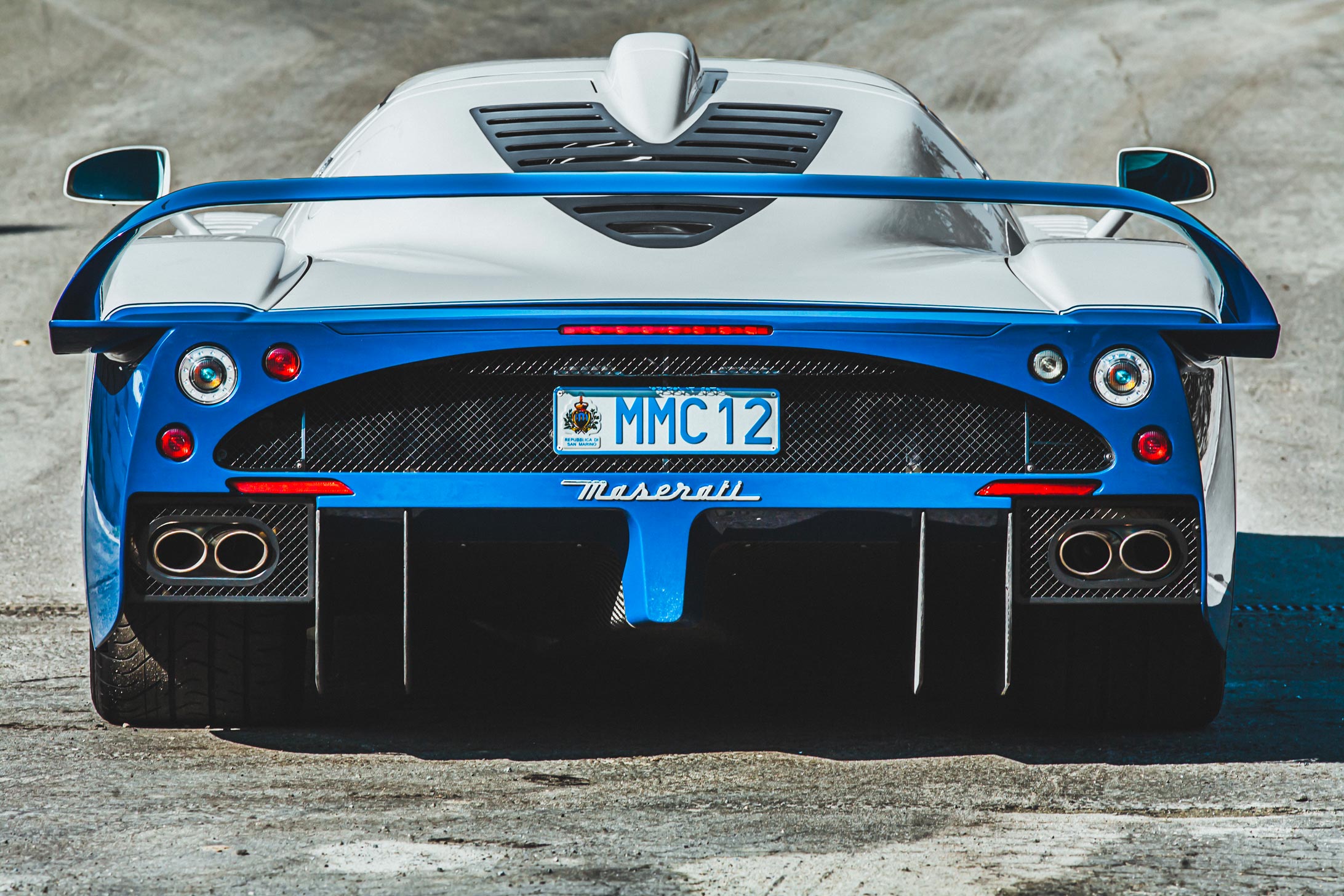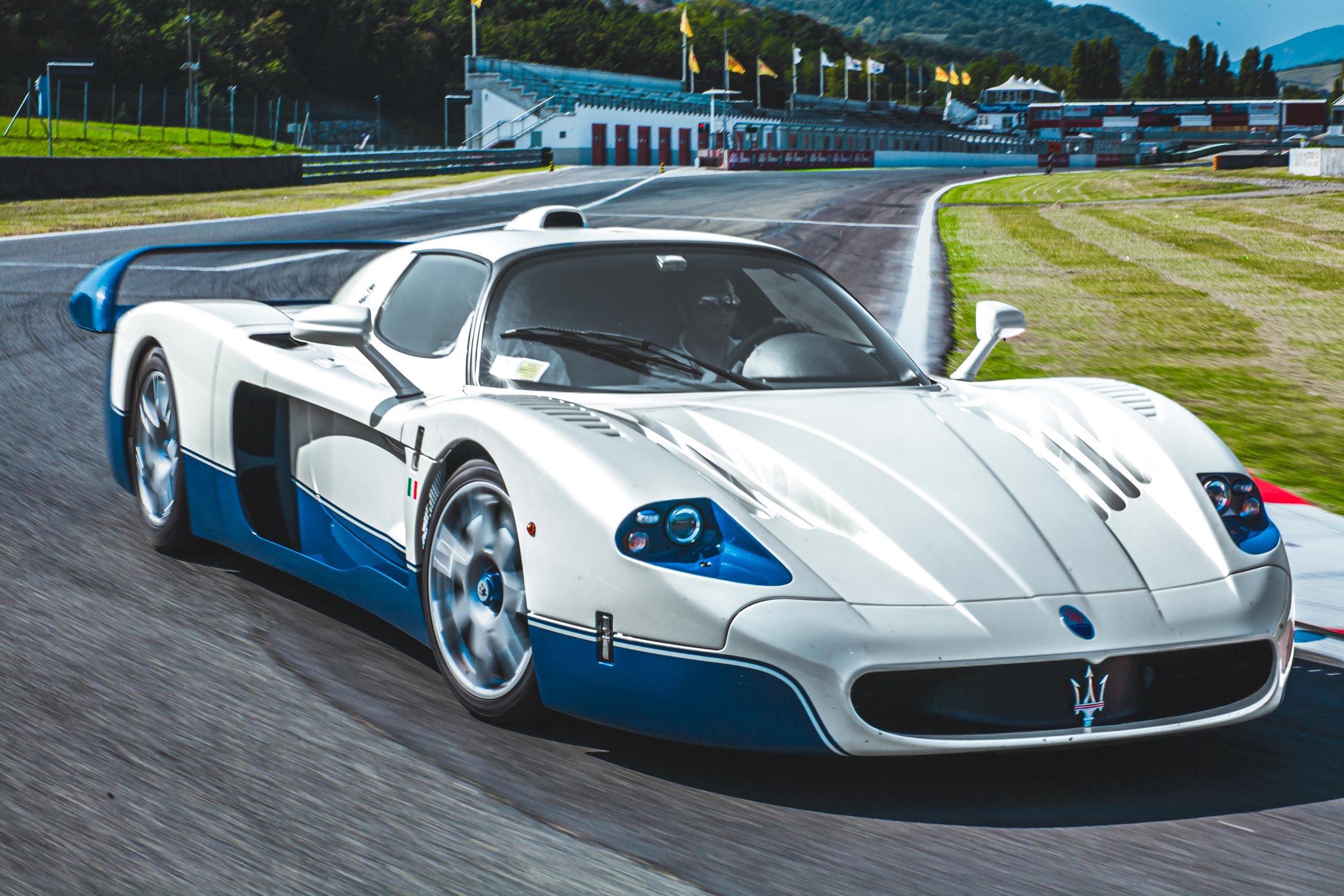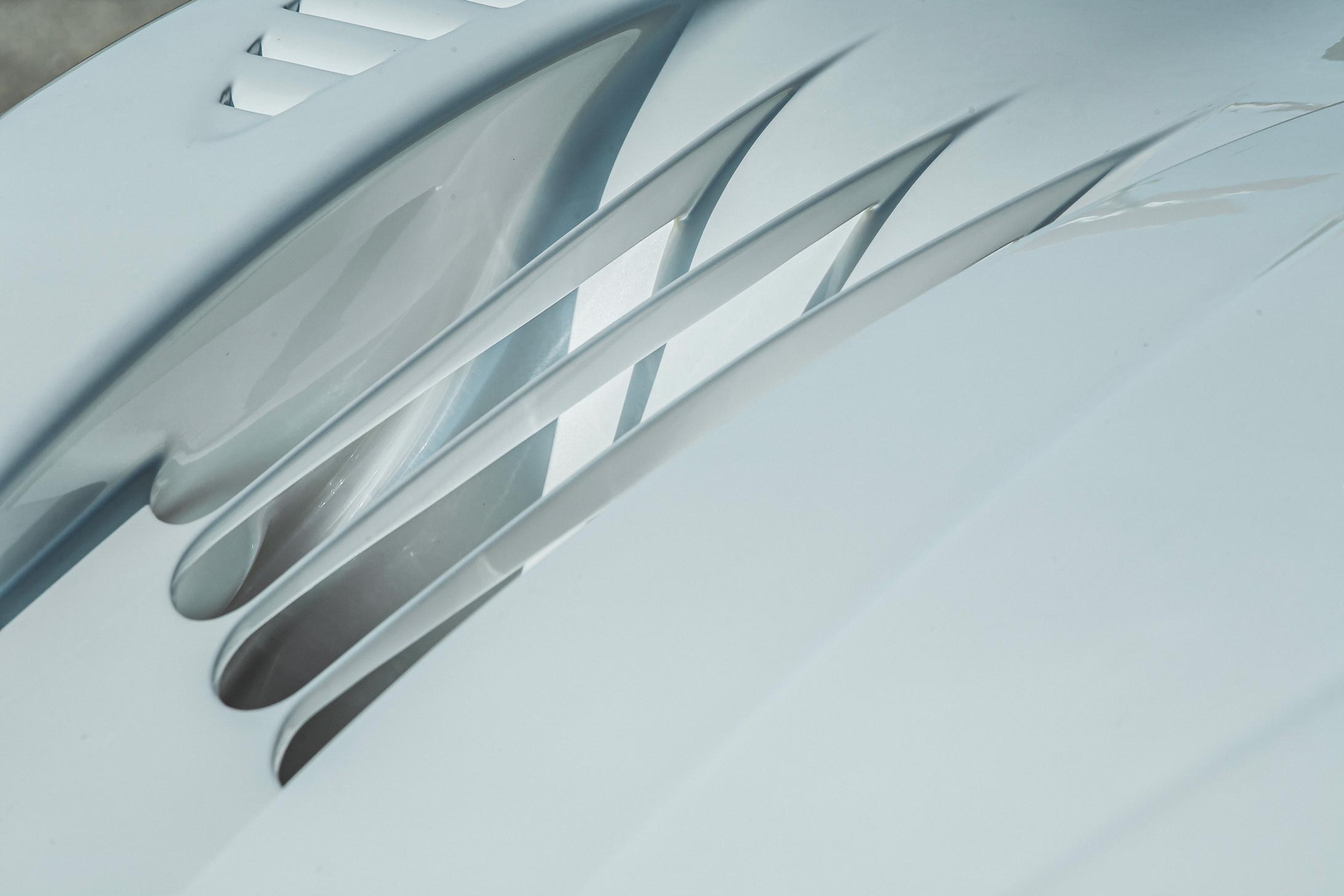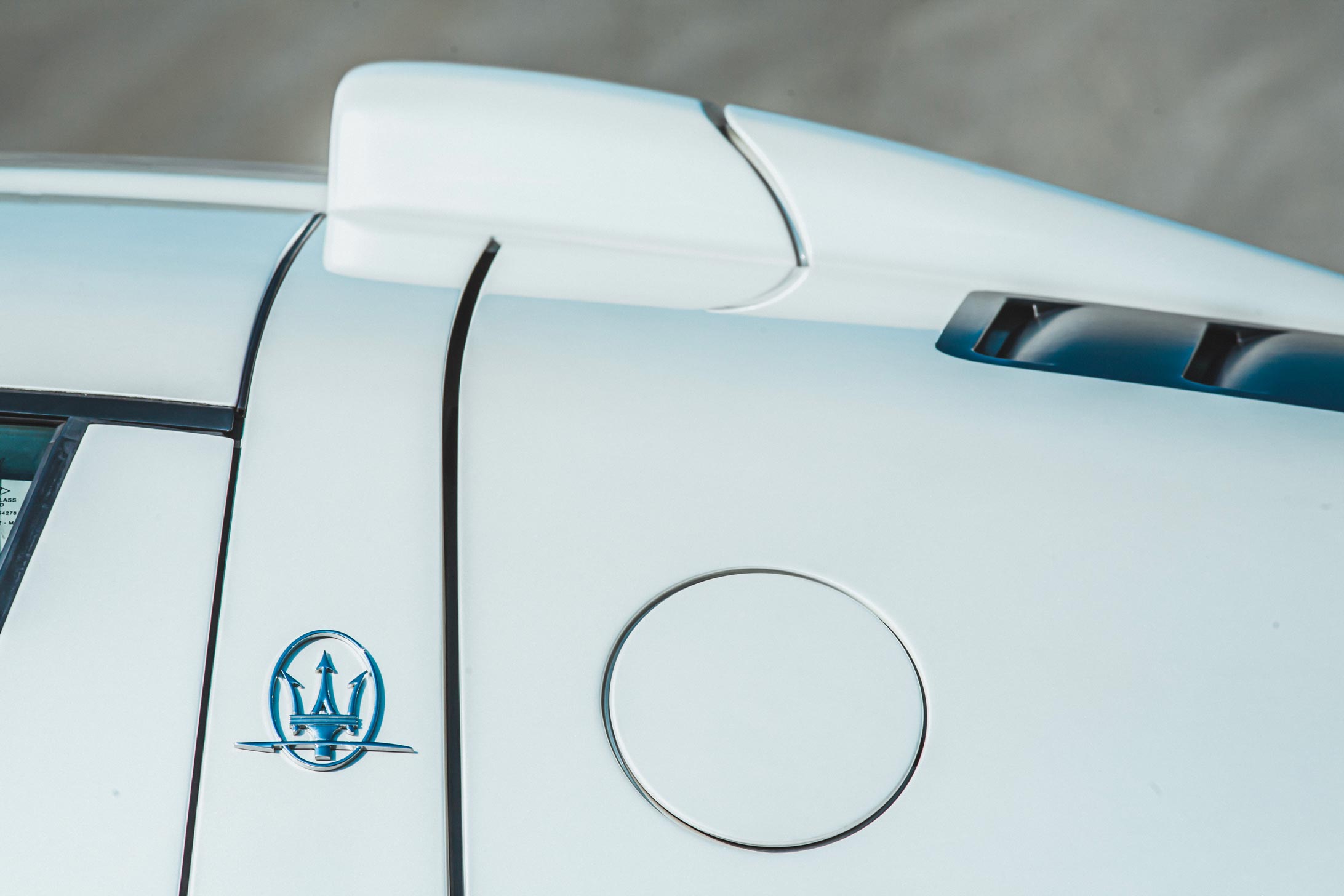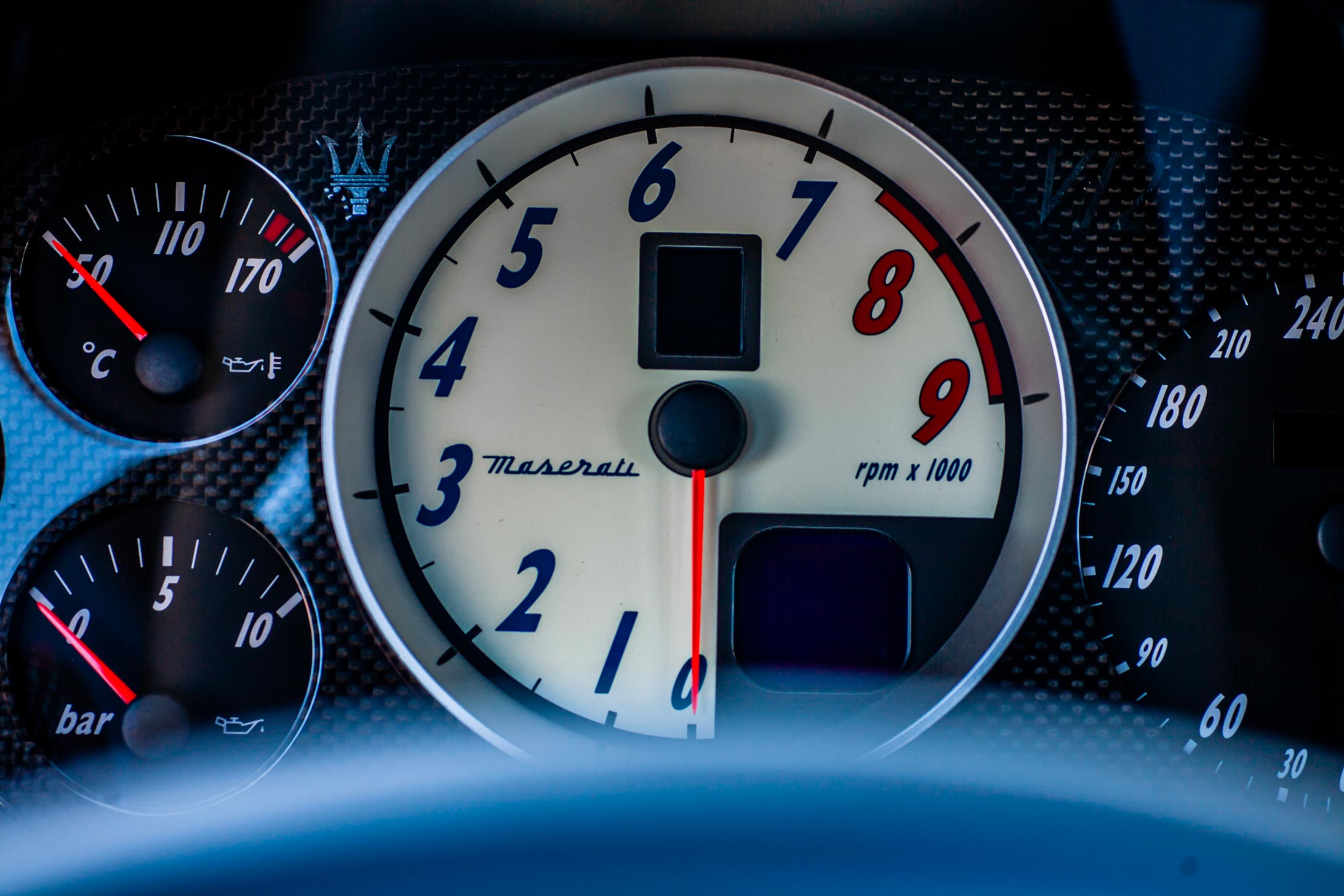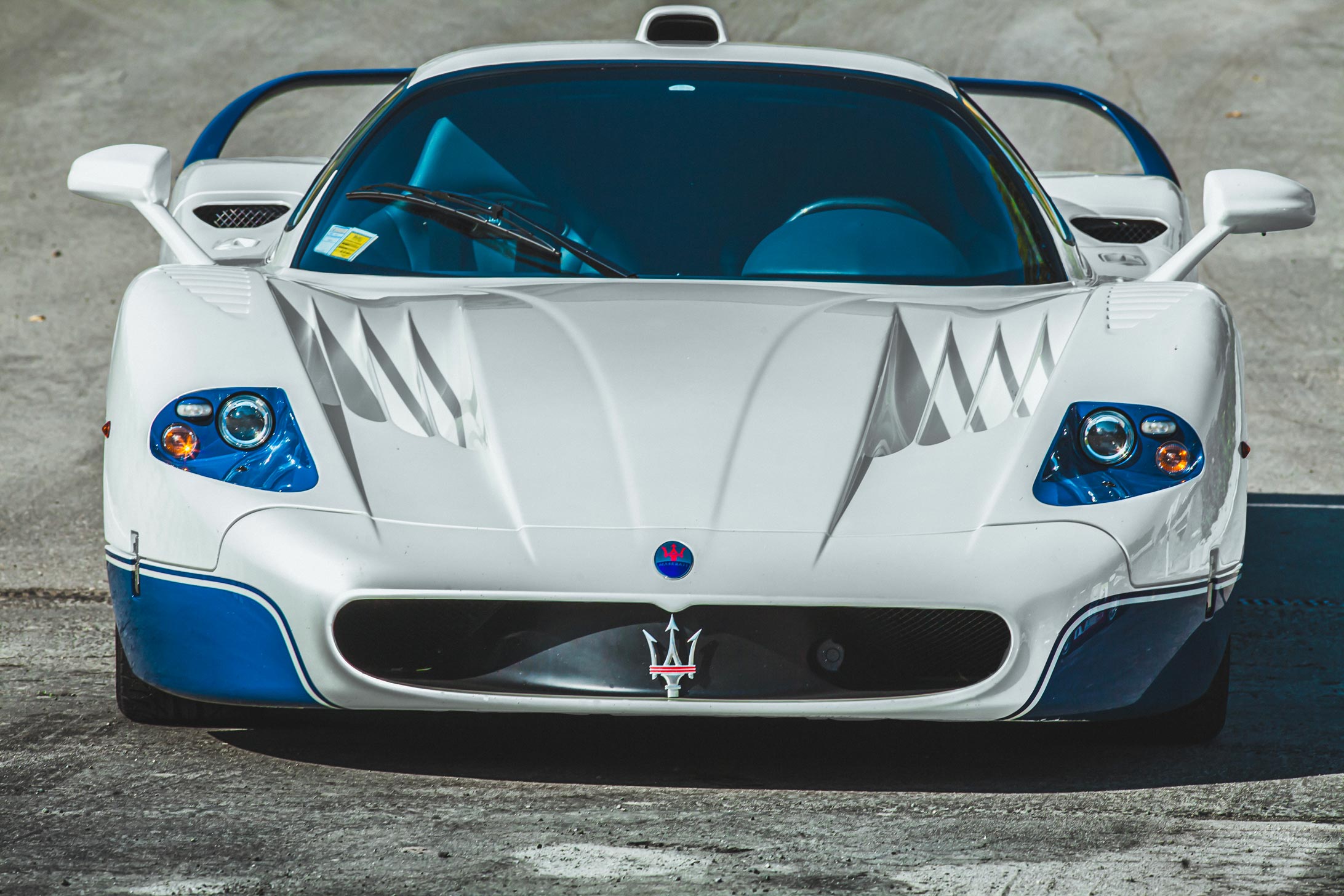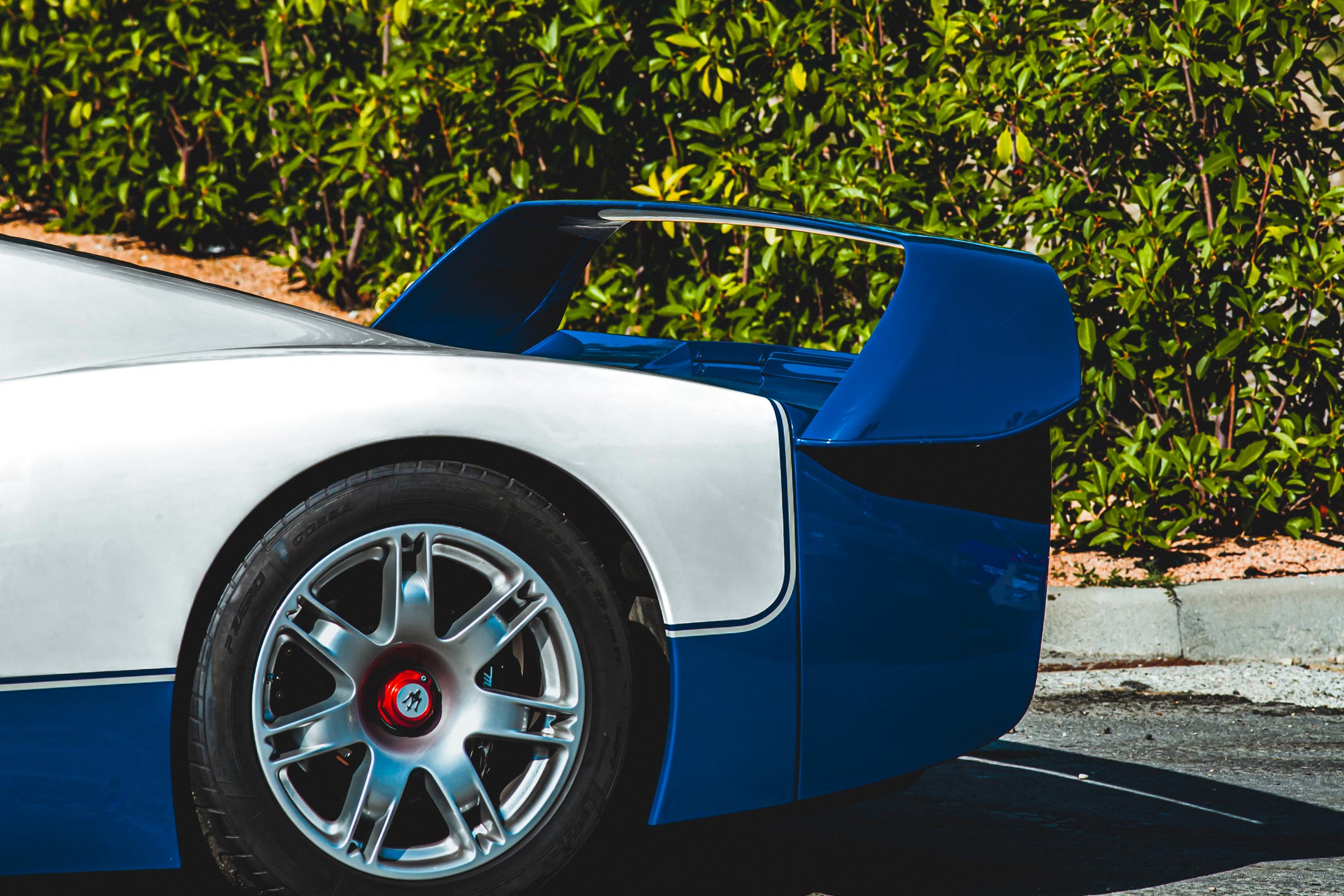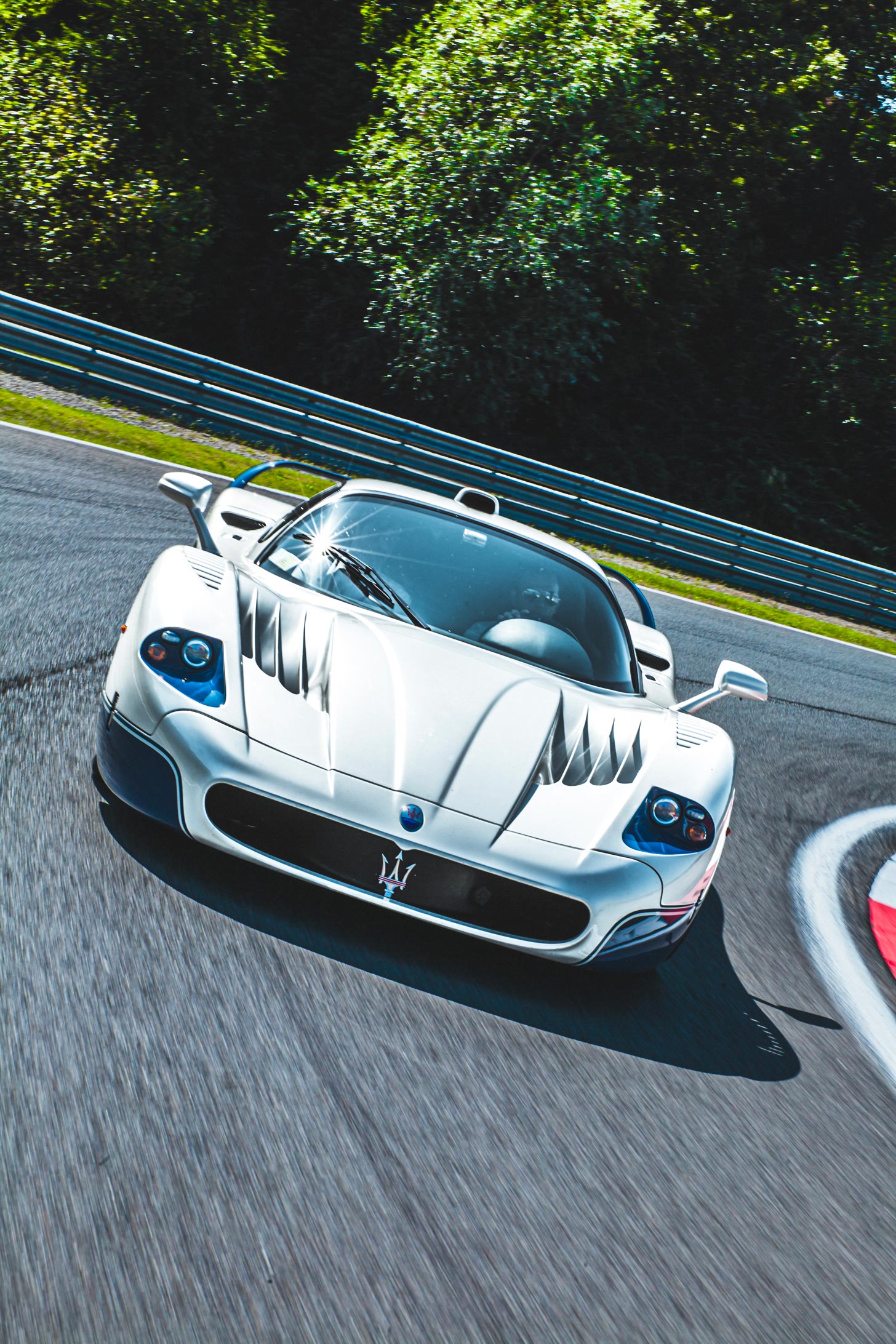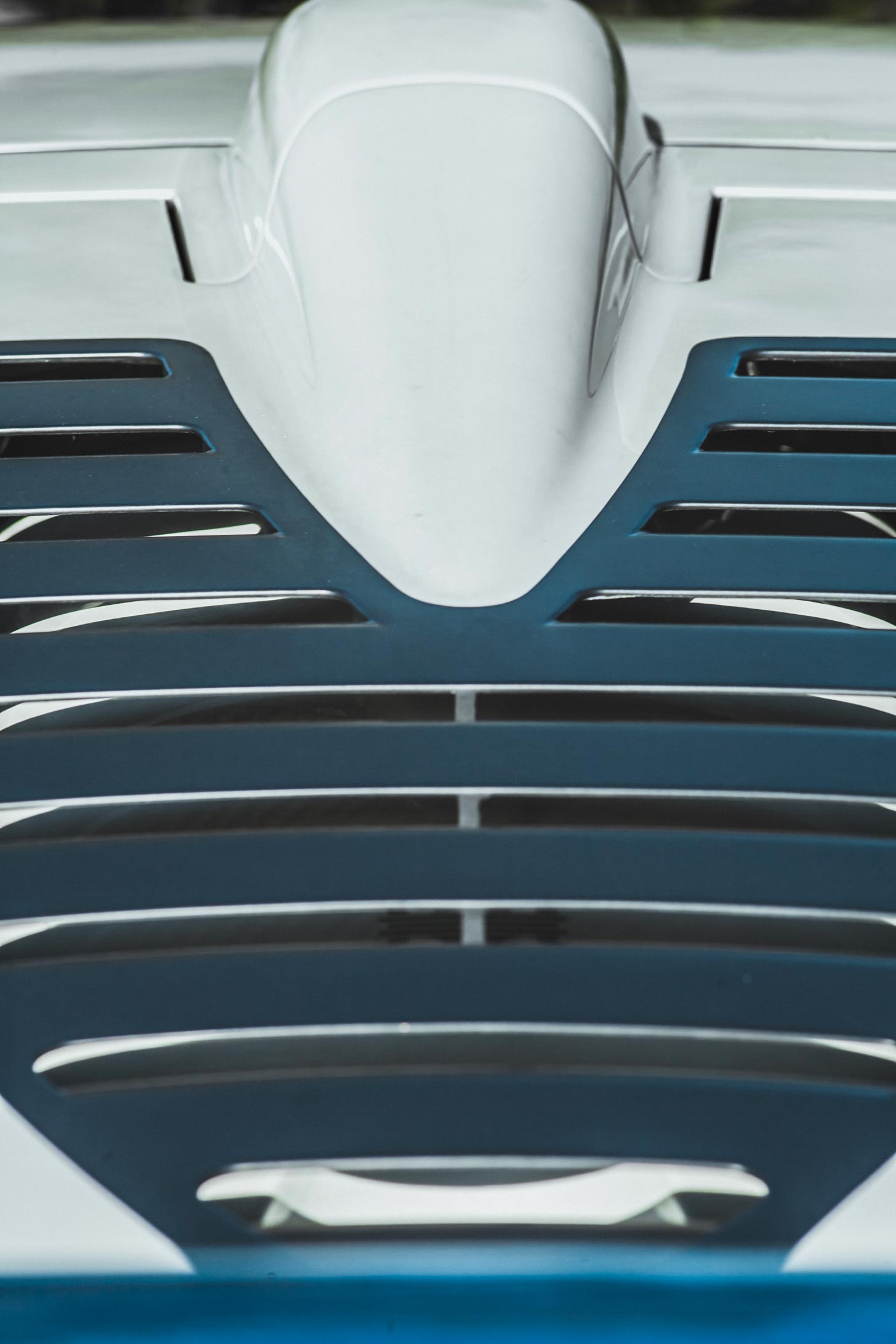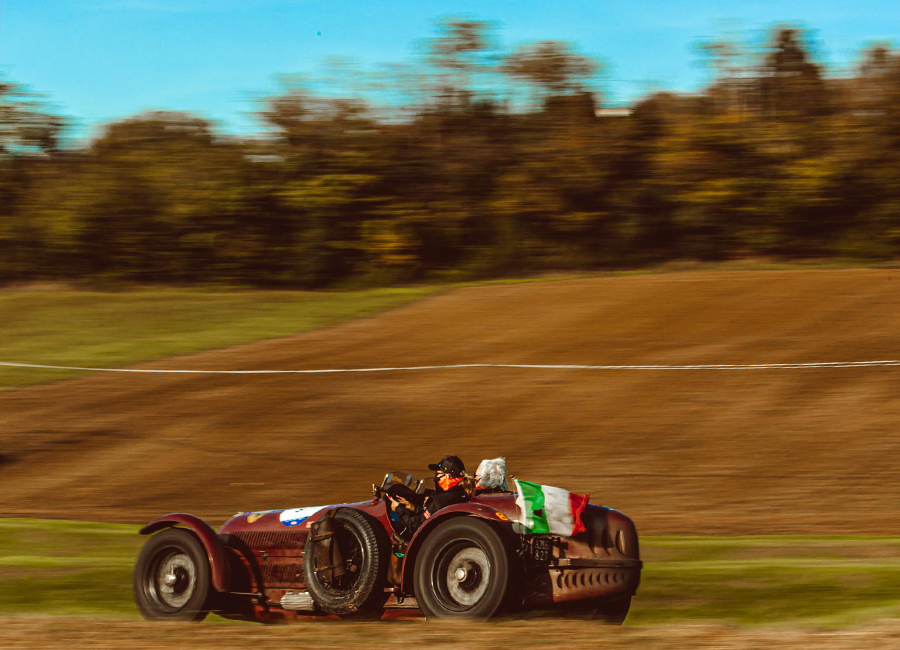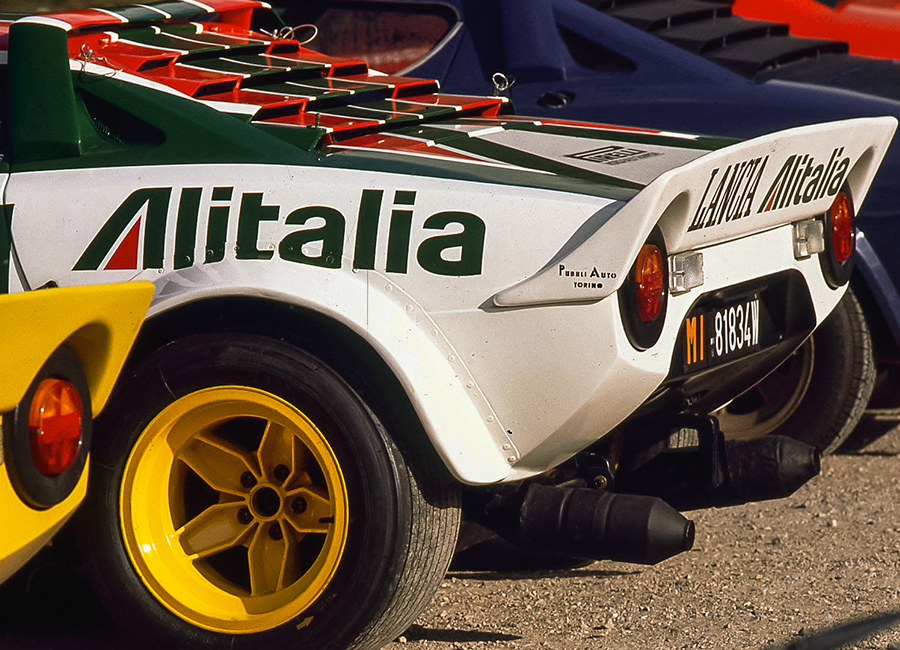“MASERATI CORSE” 12-cylinder
On 5th September 2004, after almost 40 years of absence from competitions and the last appearance of the Birdcage, Maserati showed up at Imola with its new “total” weapon: the MC 12. The Trident Brand entered two cars in the race and the line up was composed by Andrea Bertolini – Mika Salo and Johnny Herbert – Fabrizio De Simone. There was a lot of international attention on the car with which Maserati would return to endurance racing. Even though official homologation had not yet been obtained and the MC 12s could not score points for the GT Championship (which had already been going on for some time) racing at Imola was the opportunity to test the potential of this new GT car. The results of the mighty roadster with carbon fibre bodywork and the removable roof did not disappoint: the two MC 12s finished second and third in the race, making its rivals understand what their worries would be in the future!
To tell the story of this successful V12 car, we have to refer to the Ferrari Enzo model, from which the MC12 derives and is based, in terms of mechanics, engine and chassis. The touch that allowed this road GT to achieve such a high level of competitiveness on the track was that of Giampaolo Dallara, who took care of the chassis and trim during the design phase. The aggressive and streamlined bodywork (much more rounded than Enzo’s) was designed by Giorgetto Giugiaro and was awe-inspiring because of its prominent shapes. The two-tone white-blue paint is a tribute to the legendary Birdcage who ran in this livery for the famous American Camoradi Team in the ‘60s.
Its 6-litre (5998cc) 12-cylinder, supply power of 630hp at 7,500rpm and, as told, was Ferrari-derived, although unlike the Enzo engine uses a cascade gear distribution rather than a chain. Its qualities, on 1335kg of total weight, are unquestionable: with a shot from 0 to 100 in just 3.8 seconds, it can then fire the MC 12 at a considerable speed of 330 km/h and over. The electro-actuated gearbox (Cambiocorsa Maserati) is activated by the rocker levers behind the steering wheel and, although less lightning-fast than the F1 gearbox on the Enzo, it manages to shift gears from first to sixth with a shocking response.
The interior, although carefully finished with wraparound leather seats in carbon fibre structure and a large central tunnel separating the two “living parts”, conveys the feeling of being in a racing car. The reduced space, the button to start the engine, the doors that protectively surround you, thanks to a rather reduced side glazing, make a lot of racing. And that’s what it’s all about! The MC 12 is designed to race, and everything in its DNA respects this specification. The deformable quadrilateral suspensions with pushrod type scheme are designed to guarantee an extremely neutral set-up, that guarantees extremely precise trajectories. Weight distribution, with 41% at the front and 59% at the rear, favours grip to the huge 245/35 tyres at the front and 345/35 at the rear.
But if this is still not enough, the enormous rear wing increases the pressure on the rear axle (and therefore the grip) by 250 kg, already at a speed of 200 km/h, by changing the weight distribution between front and rear axle. The flat bottom with its special extractor chute guarantees a flawless adhesion to the ground. In short, a true Maserati built by the Modenese company to revitalise the splendour of its glorious competitive past. More than ten years after its retirement from racing, Maserati showed off a supercar that could relaunch the brand in Motorsport: welcome MC20, we look forward to a track version of the modern supercar.
ENGINEROUTE
“MASERATI CORSE” 12-cylinder
On 5th September 2004, after almost 40 years of absence from competitions and the last appearance of the Birdcage, Maserati showed up at Imola with its new “total” weapon: the MC 12. The Trident Brand entered two cars in the race and the line up was composed by Andrea Bertolini – Mika Salo and Johnny Herbert – Fabrizio De Simone. There was a lot of international attention on the car with which Maserati would return to endurance racing. Even though official homologation had not yet been obtained and the MC 12s could not score points for the GT Championship (which had already been going on for some time) racing at Imola was the opportunity to test the potential of this new GT car. The results of the mighty roadster with carbon fibre bodywork and the removable roof did not disappoint: the two MC 12s finished second and third in the race, making its rivals understand what their worries would be in the future!
To tell the story of this successful V12 car, we have to refer to the Ferrari Enzo model, from which the MC12 derives and is based, in terms of mechanics, engine and chassis. The touch that allowed this road GT to achieve such a high level of competitiveness on the track was that of Giampaolo Dallara, who took care of the chassis and trim during the design phase. The aggressive and streamlined bodywork (much more rounded than Enzo’s) was designed by Giorgetto Giugiaro and was awe-inspiring because of its prominent shapes. The two-tone white-blue paint is a tribute to the legendary Birdcage who ran in this livery for the famous American Camoradi Team in the ‘60s.
Its 6-litre (5998cc) 12-cylinder, supply power of 630hp at 7,500rpm and, as told, was Ferrari-derived, although unlike the Enzo engine uses a cascade gear distribution rather than a chain. Its qualities, on 1335kg of total weight, are unquestionable: with a shot from 0 to 100 in just 3.8 seconds, it can then fire the MC 12 at a considerable speed of 330 km/h and over. The electro-actuated gearbox (Cambiocorsa Maserati) is activated by the rocker levers behind the steering wheel and, although less lightning-fast than the F1 gearbox on the Enzo, it manages to shift gears from first to sixth with a shocking response.
The interior, although carefully finished with wraparound leather seats in carbon fibre structure and a large central tunnel separating the two “living parts”, conveys the feeling of being in a racing car. The reduced space, the button to start the engine, the doors that protectively surround you, thanks to a rather reduced side glazing, make a lot of racing. And that’s what it’s all about! The MC 12 is designed to race, and everything in its DNA respects this specification. The deformable quadrilateral suspensions with pushrod type scheme are designed to guarantee an extremely neutral set-up, that guarantees extremely precise trajectories. Weight distribution, with 41% at the front and 59% at the rear, favours grip to the huge 245/35 tyres at the front and 345/35 at the rear.
But if this is still not enough, the enormous rear wing increases the pressure on the rear axle (and therefore the grip) by 250 kg, already at a speed of 200 km/h, by changing the weight distribution between front and rear axle. The flat bottom with its special extractor chute guarantees a flawless adhesion to the ground. In short, a true Maserati built by the Modenese company to revitalise the splendour of its glorious competitive past. More than ten years after its retirement from racing, Maserati showed off a supercar that could relaunch the brand in Motorsport: welcome MC20, we look forward to a track version of the modern supercar.
ENGINEROUTE


